Did Disney's Beast Die in the French Revolution?
And other impertinent questions about Disney's "Beauty and the Beast"
Like most millennials, I have a deep fondness and affection for the animated Disney movies of the early ‘90s, including and especially Beauty and the Beast (1991)*, which, among other things, gave me the confidence I needed as a youth to be an insufferable nerd about reading books.
Unfortunately, as I have grown older, my unconditional fondness for this millennial mainstay has been soured by nagging questions about the details of the movie — well, really, just one in particular, which is:
Did Maximilien Robespierre have the Beast guillotined during the French Revolution’s Reign of Terror?
Bear with me for a moment.
In the prologue to the movie, the Beast is described as a “prince” who turns away an old beggar woman during the winter who turns out to be an enchantress in disguise and who curses the prince (and his entire castle) for this slight.**
We can only assume that the term “prince” is an embellishment — from the establishment of the Capetian dynasty in 987 there are really no other French princes aside from, you know, the main one, and while I suppose perhaps the Beast could be an Angevin or Navarran prince, that seems unlikely given the time period and location of his lands (more on that later). Let us assume instead that the Beast is actually a Duke or Count of some kind, of which there were many in the ancien regime. Among other things, this tells us that Beauty and the Beast definitively takes place before the revolution, which abolished hereditary titles in 1790 — the Beast is obviously not a man who got his fortune by working.
This raises the critical question: does Beauty and the Beast take place close enough to the Revolution for the Beast (a provincial noble with clear reactionary sentiments) to fall victim to it?
Let’s find out.
Dating “Beauty and the Beast’
The movie makes no references whatsoever to any king or polity that might help us determine when it takes place, but we can try to narrow it down somewhat (and don’t come at me with “Rob, it obviously takes place in a magical fairy tale kingdom”, this isn’t Snow White, it’s clearly France). The material culture, clothing styles, and general aesthetic of Beauty and the Beast are obviously 17th-18th century France, which is still a substantial range, but let’s start with the location.
Where is Belle’s Village?
In the image below, we see Belle wandering through her town:
One obvious clue here is the sign in the foreground, which reads “Plantes & Fleurs” in standard French. This both does and doesn’t help us — before the revolution regional languages like Occitan or Breton were commonly spoken and written, so it is likely that she lives closer to the metropole, where French is, well, the lingua franca, but that doesn’t narrow it down a lot.
The other notable thing about this image is the style of building, half-timbered detached houses, a form of construction common in Germany and in the Alsace region of France (France’s own tourism board locates Belle’s village here).
Alsace is a historically German-speaking region on the border of France and Germany that changed hands repeatedly throughout the early modern era, but for our purposes it is most important to know that it was partially and then fully integrated as a French province in 1648 and then 1679 with the Treaties of Nijmegen. Assuming that Alsace is the location of Belle’s village, then this means that (given that they are all speaking and writing in French), that the movie takes place no earlier than the mid-17th century, and more likely the 1680s.
This feels a little tenuous though, so let’s see if we can’t find some corroborating evidence.
What are the Objects the Servants Transformed Into?
As a part of the (very confusing) curse laid on the Beast’s castle, his servants were transformed into common household objects. While I have a lot of questions about the mechanics and even metaphysics of this transformation, we are going to have to leave that for another time. Instead, let’s look at what each of these transformations can tell us.
The primary characters we have to work with are Mrs. Potts (a teapot), Lumière (a candlestick), Cogsworth (a clock), the Featherduster (who is apparently named Babette?), Sultan (an Ottoman), and assorted others. Perhaps an antiquarian would be able to tell us more about the make and period of a candlestick or featherduster, but that’s beyond me, so let’s focus our efforts elsewhere.
Let’s start with Cogsworth. There are a number of obvious clues here, the most important being the obvious pendulum in his chest. The pendulum mechanism was invented by Dutch scientist Christiaan Huygens in 1656, and widespread manufacture began shortly after (once again giving us the 1660s as the earliest date for the events of Beauty and the Beast). Though Cogsworth has the classic pendulum display of a grandfather clock, his size relative to the other transformed servants suggests that he is a mantel clock, a type of pendulum clock that emerged in mid 1700s.
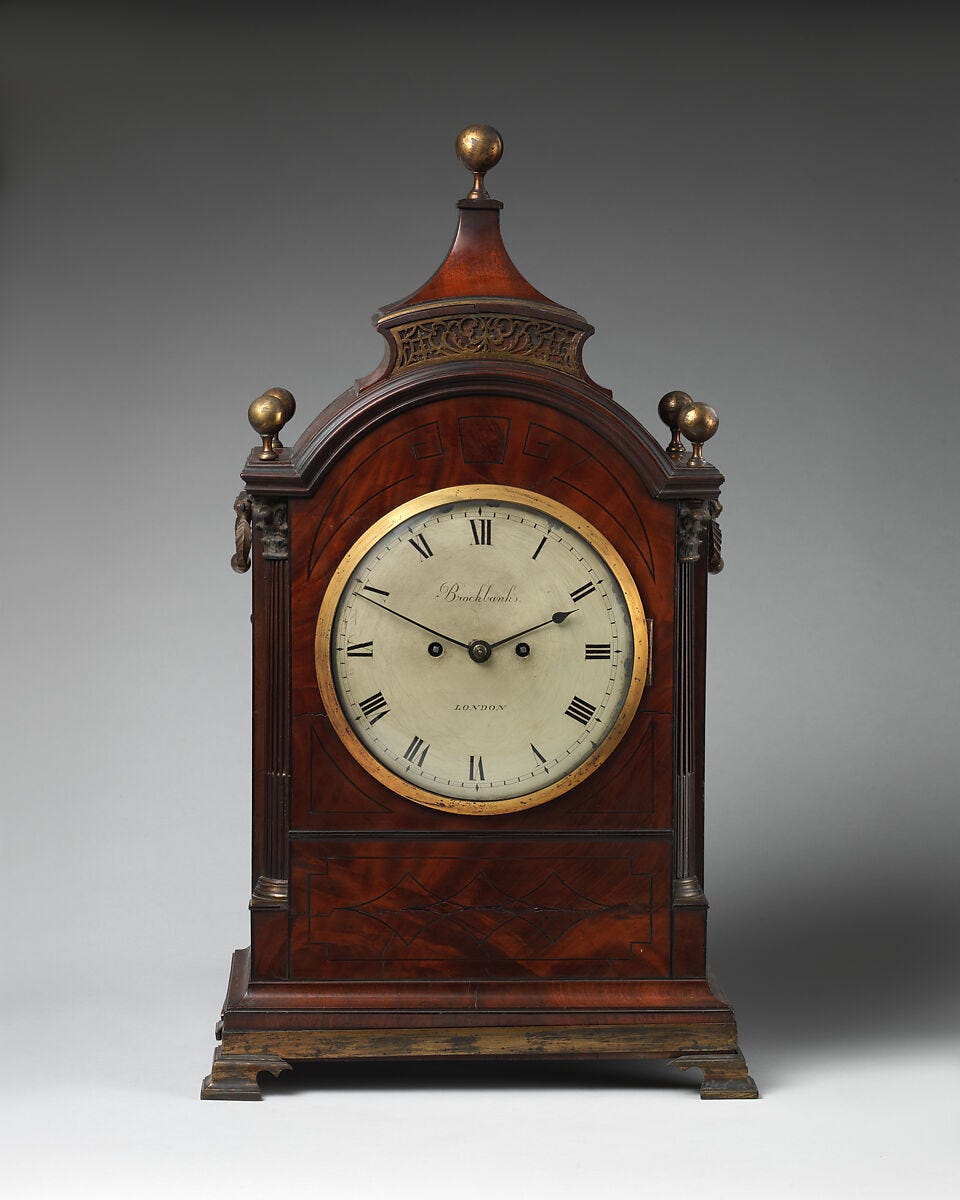
Interestingly, Cogsworth more closely resembles an English bracket mantel clock than the ornate brass and porcelain clocks produced in France at the time, which is curious because Louis XIV had banned the importation of English clocks in 1711, but I think we can just chalk that up to a peculiarity of the curse that transformed him. There are a lot of open questions here, but I think that Cogsworth pushes the possible time frame for Beauty and the Beast until at least the mid-18th century.
Mrs. Potts can also help us be more precise. She is very clearly a porcelain teapot, but also clearly not of Asian provenance, which is important: porcelain manufacture in Europe was impossible until the publication of Lettres édifiantes et curieuses de Chine par des missionnaires jésuites in 1711 by François Xavier d'Entrecolles revealed the secrets of its production. Production ramped up pretty quickly in Europe after that, with Chantilly in France and Meissen in Germany becoming centers of a booming new porcelain trade. A pot like Mrs. Potts might have been made as early as the 1710s, but based on the style, it’s more likely that she was based on a Chantilly or Meissner teapot from the 1730s or 1740s.

There’s still a lot of guesswork involved here, but assuming that the prince’s household staff were transformed into objects already present in the household or stylistically coherent with the castle, I think we can safely place the timing of the curse at around ~1740-1750.
What About Belle’s Iconic Yellow Ballroom Gown?
Anachronistic nonsense. The horned-up fever dream of a bunch of middle-aged male Disney animators. The less said about this dress the better.
Doing the Math
Taking 1750 as the approximate locus of our material culture, we can determine the following: the curse lasted approximately ten years, meaning that the events of Beauty and the Beast most likely take place around 1760, right in the middle of the reign of Louis XV. We also know that the circumstances of the curse are such that if the Beast does not find love by his twenty-first birthday, then the curse would last forever, and Belle breaks the enchantment at almost the last possible moment, meaning our prince is precisely twenty-one in 1760.
The events of the French Revolution kick off in 1789 and persist for a decade or so, when the Beast/Prince would have been in his fifties, and very much alive (even if we move our target date a decade or two earlier it’s very likely that our Prince would still be around). So back to the question at hand:
Did the Beast Die in the Revolution?
In 1793, following the establishment of the French First Republic, a “Committee for Public Safety” was established to respond to growing counter-revolutionary sentiment, and under the leadership of Maximilien Robespierre, it saw the arrest of over 300,000 people and the execution of nearly 17,000, an event known as The Reign of Terror (la Terreur). Though the targets of the terror were often innocent and the violence indiscriminate, one of the main groups that opposed the revolution were provincial landholders and nobility.
After the first levée en masse was called to draft conscripts for the growing war with the royalist powers of Europe, counter-revolutionary forces rose up in the Vendée, Bordeaux, Lyon, and elsewhere across the fledgling Republic, especially in places with powerful disenfranchised nobles.
So while we can’t know for sure, it stands to reason that the Beast/Prince — a provincial noble with substantial hereditary lands and an obvious reactionary streak — would oppose both the Revolution and the Republic, and stand with the royalists against the government.
Would he have been one of the victims of la Terreur? It’s hard to say whether or not he would have specifically met his end by guillotine, but it seems extremely likely that he would have lived long enough to have seen his lands seized and his noble rights rescinded, and very likely did not survive the aftermath.
Bonus: Who Betrayed the Beast?
If we imagine that the Beast did indeed perish in the Reign of Terror, who can we blame for turning on him? Who among the staff was most likely to have betrayed him to the Comité de salut public? Young Chip, whose youth and position make him a prime candidate for the sans-culottes? Lumiere, a libertine with obvious bourgeois sensibilities? An aging Le Fou, seeking revenge at last for the death of his one true love, Gaston?
No, the answer is clearly Belle.
Belle, the educated daughter of a rising petite-bourgeois merchant and a sort of proto-feminist firebrand is, of the entire cast of Beauty and the Beast, the most likely to be an early and enthusiastic supporter of the Revolution. Though now nobility herself, she might have fallen in with the likes of the Marquis de Lafayette, enamored with liberalism and the enlightenment even if it meant the loss of her wealth and privileges. One can even imagine her taking part in the Women’s March on Versailles, and tragically breaking with her recalcitrant husband as the events of the Revolution come to a head.
(Disney, if you’re reading I have a great idea for a movie about an animated guillotine)
* I am focusing on the 1991 animated film and not the remake because I have not seen it and because it would make this silly little project a lot more complicated
**I am aware that Beauty and the Beast is based off of a fairy tale published in the 1740s and possibly based off of an even older myth, but once again, I want to focus on Disney’s interpretation because that’s more fun






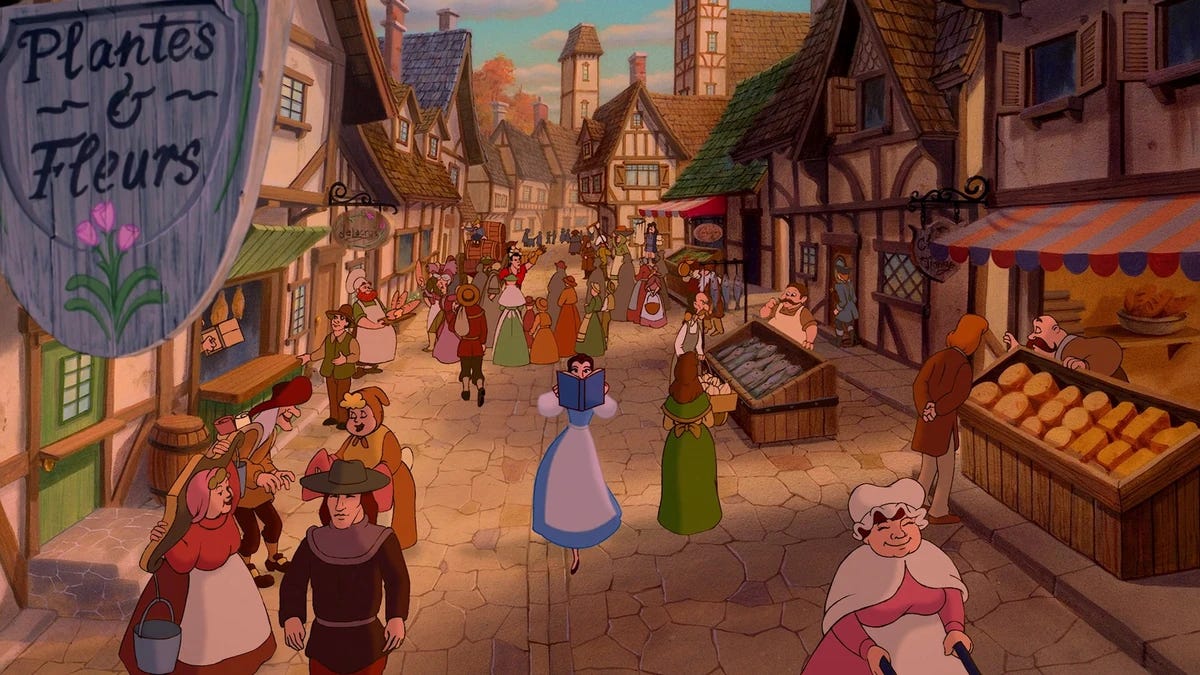
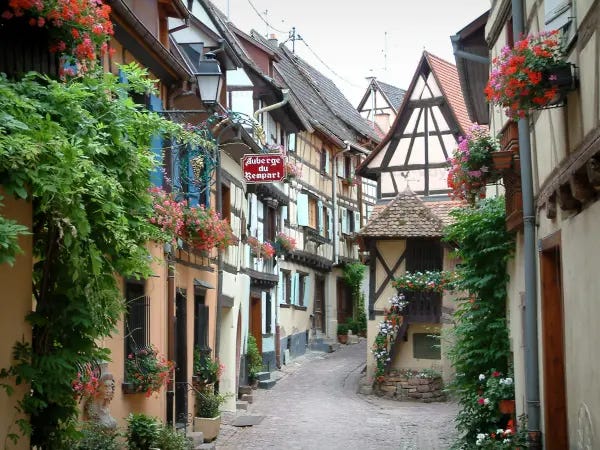

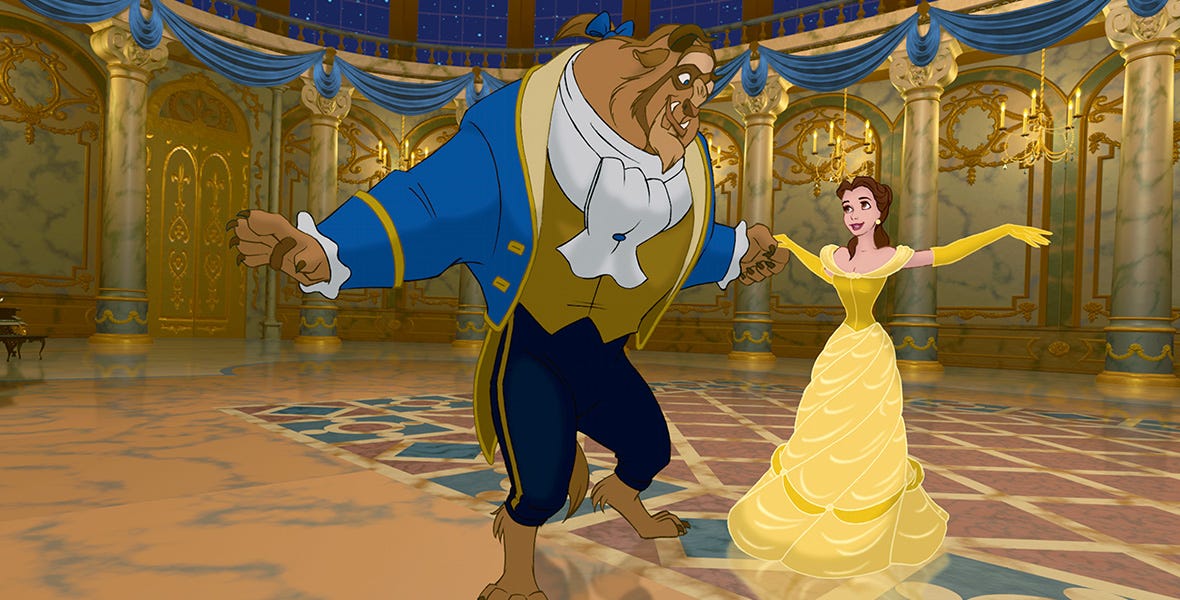
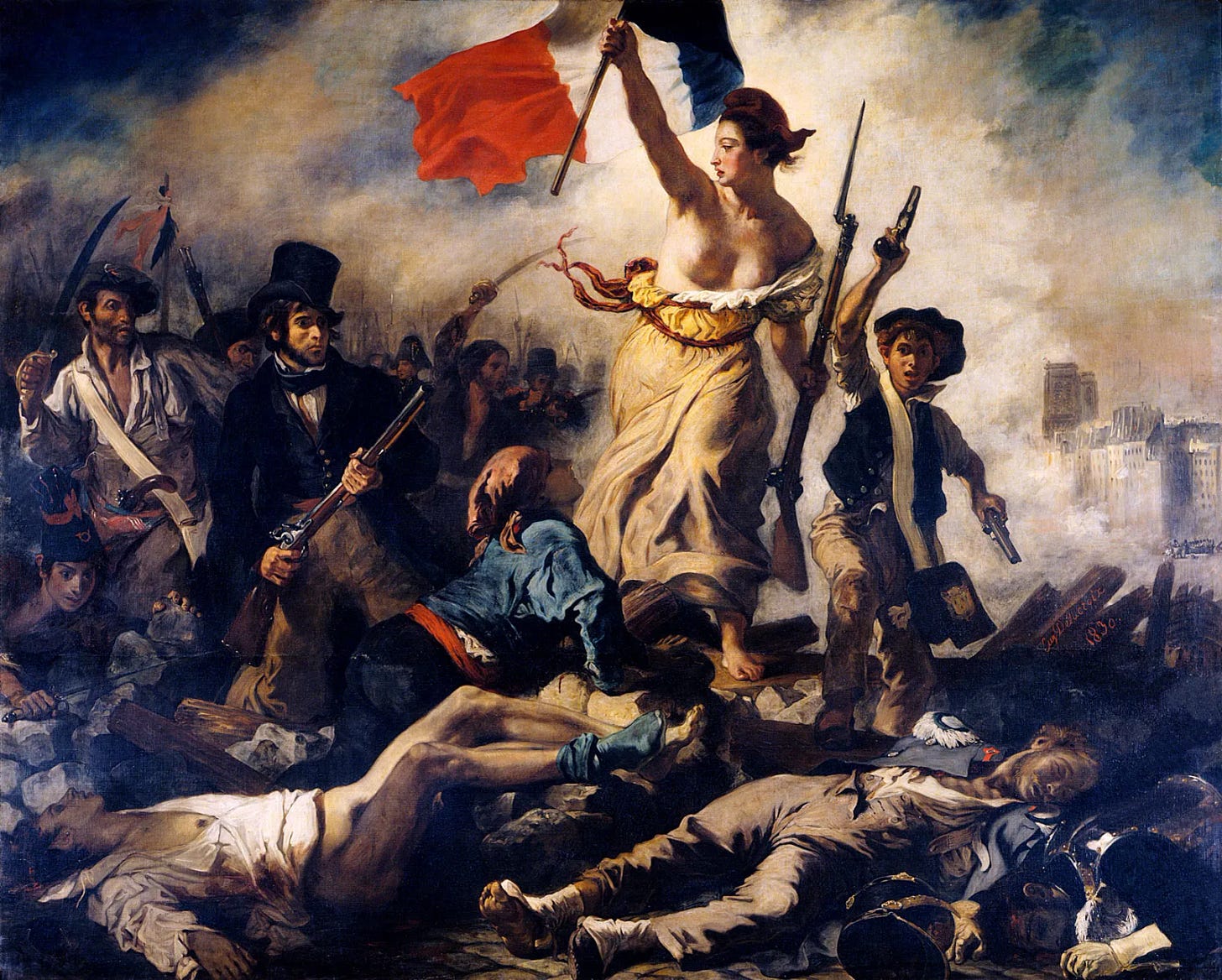
As a fellow lover of 90s animated cinema, and also because I was a nerdy brunette who never could identify with the other ‘princesses’, this whole piece is *magnifique*🥖🇫🇷🥮 In awe, bien joué.